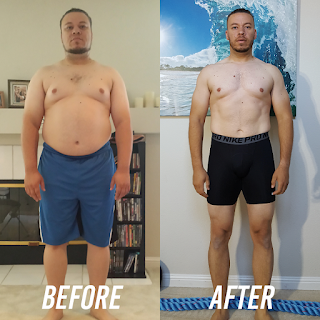How to Customize Your Weight lifting Program For Your Needs?
Weight
lifting is a fantastic sport that involves three main lifts: squat, bench
press, and deadlift. Whether you're a beginner or a seasoned lifter,
customizing your Weight lifting program can make a big difference in achieving
your fitness goals. In this blog, we'll break down the steps to help you customized weight
lifting program to suit your individual needs and preferences.
Steps to Customize Weight Lifting
Program
Set Clear Goals
Before
you start customizing your Weight lifting program, it's crucial to set clear
goals. Ask yourself what you want to achieve – is it strength, muscle building,
or simply staying fit? Having well-defined goals will guide your customization
process and keep you focused.
Assess Your Current Level
Knowing
where you stand in terms of strength and experience is essential. If you're new
to Weight lifting, it's wise to begin with a beginner's program to learn proper
form and build a foundation. For experienced lifters, an intermediate or
advanced program might be more suitable.
Choose the Right Lifts
Customized weight lifting program revolves around the three main
lifts: squat, bench press, and deadlift. However, you can also include
accessory exercises that target specific muscle groups involved in these lifts.
Pick lifts that align with your goals. For example, if you're aiming for
overall strength, compound exercises like overhead presses and rows can be
beneficial.
Determine Training Frequency
Training
frequency refers to how often you work out each week. Beginners might start
with three days a week, allowing time for recovery. Intermediate and advanced
lifters could increase to four or even five days a week. Remember, adequate
rest is crucial to avoid overtraining and injuries.
Plan Your Sets and Reps
The
number of sets and repetitions you do in each workout greatly influences your
results. For building strength, opt for lower reps (1-6) and higher weights.
For muscle building, focus on moderate reps (6-12). Your set and rep scheme can
vary from workout to workout to keep things interesting and challenging.
Manage Progressive Overload
Progressive
overload is the cornerstone of any successful Weight lifting program.This
process includes progressively adding more weight to your lifts as time goes
on. This ongoing challenge encourages your muscles to adjust and become
stronger. Maintain a training log to monitor your advancements and make sure
you're consistently testing your boundaries.
Incorporate Periodization
Periodization
involves planning your training in cycles. You can break your customized weight
lifting program into phases, such as hypertrophy (muscle building) and
strength building. This prevents plateaus and keeps your workouts fresh.
Remember to include deload weeks to give your body a chance to recover.
Listen to Your Body
While
following a structured program is essential, listening to your body is equally
important. If you're feeling overly fatigued or experiencing pain, it's okay to
adjust your workouts or take an extra rest day. Ignoring your body's signals
can lead to injuries and setbacks.
Include Mobility and Flexibility
Work
Maintaining
good mobility and flexibility is crucial for proper lifting form and injury
prevention. Incorporate dynamic stretches, foam rolling, and mobility exercises
in your warm-up and cool-down routines.
Focus on Nutrition and Recovery
Customizing
your Weight lifting program isn't just about the workouts – it's also about
what you eat and how you recover. Ensure you're getting enough protein to aid
in muscle recovery and growth. Stay hydrated and prioritize quality sleep to
support your body's healing processes.
Conclusion
A Customized weight
lifting program is all about tailoring it to your unique needs and
goals. Whether you're aiming to become stronger, build muscle, or simply stay
fit, personalizing your training routine will help you make consistent
progress. Remember, it's a journey that requires dedication, patience, and the
willingness to adapt as your body responds to the challenges you set. With the
right plan in place, you'll be well on your way to achieving your Weight
lifting aspirations.




Comments
Post a Comment